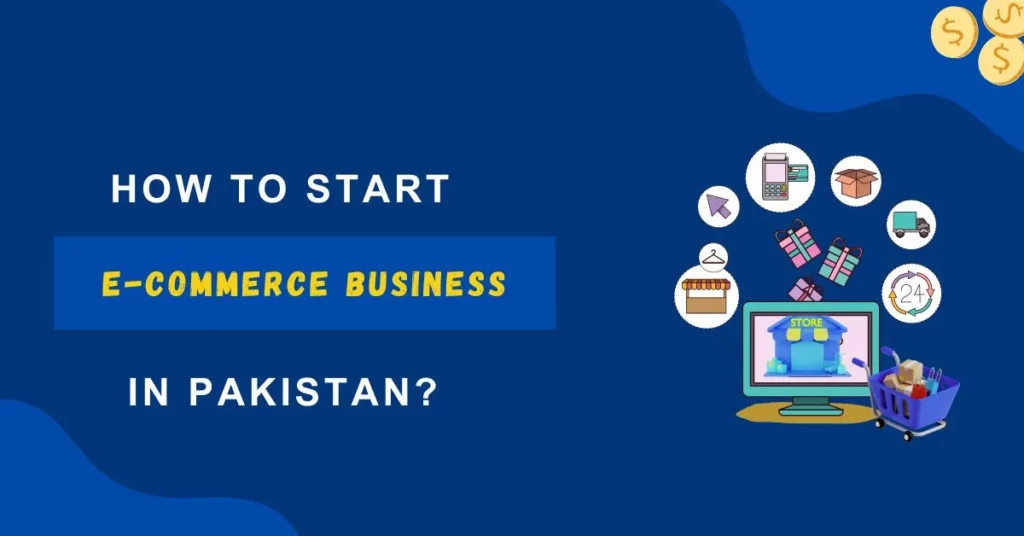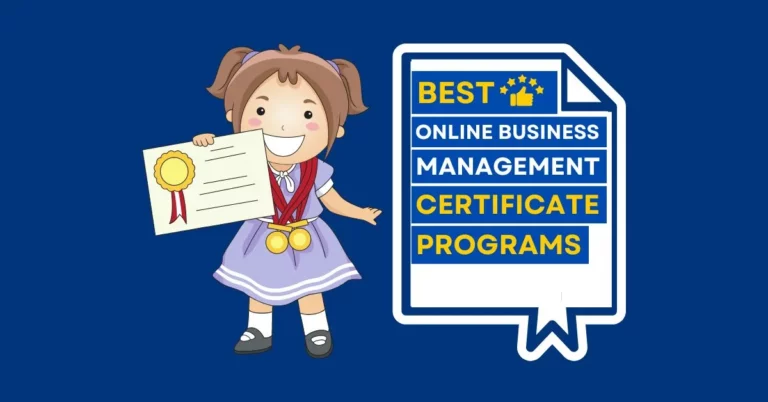
The fast-growing digital trends and Pakistan’s youthful, active market make it an excellent place to launch an e-commerce business.
Although it might be rather complicated, you can reach clients nationwide or even globally with careful preparation and effective use of digital resources.
No matter whether you’re a beginner or a professional company owner, this guide will show you how to build a profitable internet business in easy, doable stages.
Prepare yourself for dealing with Pakistan’s booming e-commerce market. We’re also dealing with starting any online business in Pakistan.
What is an e-commerce business?
The term “e-commerce,” which stands for “electronic commerce,” describes the exchange of products and services through the Internet.
It is the kind of company that has transformed conventional methods of trade by facilitating quick, simple, and global transactions.
What are the advantages of an e-commerce business?
The advantages of online shopping are numerous:
- Accessibility and Convenience: Since e-commerce companies operate online, clients may buy whenever and wherever they choose. An internet connection is all they need.
- Greater contact: An e-commerce company may contact clients not only locally but also regionally and internationally, thus increasing the pool of possible clients.
- Minimize expenses: E-commerce may minimize expenses in several ways, including fewer labor needs, a smaller physical infrastructure, and direct consumer contact without the need for middlemen.
- Customized Shopping Experience: E-commerce systems may monitor user activity to provide suggestions and customized shopping experiences that boost consumer happiness and revenues.
- Easy Scaling: By expanding their online presence, introducing new goods or services, or focusing on new areas, e-commerce companies may quickly expand.
- Collection of Data and Analysis: Businesses may utilize data about client preferences, buying patterns, and feedback from e-commerce to enhance their offerings and marketing plans.
A step-by-step guide to starting a successful e-commerce business in Pakistan
- Choosing the right product or service
- Creating a user-friendly website
- Implementing a strong SEO strategy
- Building a brand
- Mastering digital marketing
- Providing excellent customer service
- Streamlining order fulfillment and delivery
- Measuring Performance and Optimizing Accordingly
Step 1: Choosing the Right Product or Service
Finding and offering a product or service that is in great demand is crucial to starting a profitable online company.
It is more crucial to identify a special advantage that sets your business apart from the competition than it is to make a sale.
This could include selling products that are difficult to acquire in the local market or providing a superior or easiest solution to a common issue.
Here is a detailed guide on how to do it.
- Identify your passions and interests.
- It’s always easier to sell something you’re passionate about. Look for products or services that interest you and align with your expertise.
- Conduct market research.
- Identify gaps in the market that your product or service can fill. Use tools like Google Trends and social media platforms to see what potential customers are talking about and looking for.
- Consider profit margins.
- Some products are more profitable than others. High-ticket items may offer larger profit margins, but they might also require more customer service and support.
- Evaluate the market competition.
- Look at the competition in your chosen product or service category. Are there already many companies selling this product, or is there a gap in the market?
Step 2: Creating a User-Friendly Website
Your website serves as your online shop; it is your storefront online.
Similar to how a real shop should be controlled, organized, and straightforward to navigate, your e-commerce website has to provide prospective consumers with an easy and innate experience.
The steps are listed below in detail:
- Choose an e-commerce platform.
- Consider platforms like Shopify, WooCommerce, or Magento. These platforms provide ready-made solutions for creating an online store.
- Design with the user in mind.
- The design should be clean, professional, and easy to navigate. Make sure all product images are high-quality and descriptions are clear.
- Ensure mobile responsiveness
- More and more consumers are shopping on their mobile devices. Make sure your site is optimized for mobile viewing.
- Secure Your Website
- Use HTTPS for your website and integrate secure payment gateways to protect your customers’ data.
Step 3: Implementing a Strong SEO Strategy
With lots of e-commerce websites on the internet, standing out and getting determined through possible clients can be challenging.
This is the place where Search Engine Optimization (SEO) comes in.
A strong website positioning approach will assist your internet site to rank greater in search engine results, growing its visibility to manageable customers.
Here’s how to do it:
- Keyword Research
- Find the keywords your potential customers are using to search for products or services like yours. Tools like Google Keyword Planner and SEMrush can help.
- On-Site SEO
- Optimize your website’s content and HTML source code to be search engine friendly. This includes optimizing Meta tags, using proper headers (H1, H2), and integrating keywords naturally into your content.
- Off-Site SEO
- Create quality backlinks to your site from other relevant, high-authority websites. You can do this through guest blogging, influencer marketing, and social media engagement.
Step 4: Building a Brand
A crucial first step is creating a powerful, recognizable brand. A brand is more than just a distinctive name, a lovely logo, or a memorable tagline.
The goal is to develop a comprehensive customer experience that incorporates aesthetics, tone, messaging, and interactions.
A powerful brand sets your company apart from competitors and increases consumer loyalty, trust, and awareness.
How to develop your brand is as follows:
- Define Your Brand Identity
- Your brand identity is what sets you apart from your competitors, and it involves more than just a logo. It includes your values, how you communicate your product, and what you want your customers to feel when they interact with your business.
- Create a Unique Logo and Tagline
- Your logo will appear on everything that relates to your business, so it needs to convey the essence of your brand. A memorable tagline can also be a powerful branding tool.
- Maintain a Strong Online Presence
- Maintaining a strong online presence across various channels, such as your website, social media, and email marketing, can help boost your brand’s visibility and credibility.
Step 5: Mastering Digital Marketing
A game-changer in the e-commerce sector is digital marketing. The digital sphere is where you interact with your clients as an e-commerce company.
Reaching a bigger audience, turning visitors into customers, and maintaining relationships with consumers to encourage repeat business are all made possible by an efficient digital marketing plan.
Here’s how you can master digital marketing:
- Use Email Marketing
- Email marketing is a cost-effective way to reach your customers directly. Regular newsletters, promotional emails, and transactional emails can help you nurture relationships with your customers.
- Leverage Social Media Marketing
- Use platforms like Facebook, Instagram, and Twitter to reach and engage with your audience. Regular posting, engaging with comments, and using paid advertising can help boost your visibility.
- Consider Search Engine Marketing (SEM)
- SEM involves using paid strategies like Google Ads to increase your visibility on search engine results pages. It’s a powerful tool for reaching customers who are actively looking for products or services like yours.
Step 6: Providing Excellent Customer Service
In the age of e-commerce, offering outstanding customer service is a requirement. Customers purchase experiences from you rather than only goods or services.
Offering top-notch customer service can increase brand loyalty, encourage positive word-of-mouth, and encourage repeat business.
Here are some suggestions for giving exceptional customer service:
- Train Your Customer Service Team
- Your customer service team is the face of your company. They should be well-trained in your products or services, be able to solve problems quickly and communicate in a polite and friendly manner.
- Provide Multiple Contact Channels
- Make it easy for your customers to reach you. This could include a phone number, email address, live chat, and social media. The more channels you offer, the more convenient it will be for your customers.
- Use Customer Feedback
- Customer feedback can provide valuable insights into what’s working well and what needs improvement. Regularly ask for feedback and use it to improve your products, services, and customer service.
Step 7: Streamlining Order Fulfillment and Delivery
In e-commerce, the experience you deliver doesn’t end when a customer clicks the ‘buy’ button.
Order fulfillment and delivery are key to customer satisfaction and loyalty. They involve ensuring a smooth process from placing an order to delivering goods.
This process should be effective, simple, and hassle-free.
Here’s how you can streamline your order fulfillment and delivery:
- Set Up Efficient Order Processing
- Ensure that your system promptly acknowledges all new orders and that they are swiftly passed on to your warehouse or fulfillment center. Delays in this process can lead to backlogs and longer delivery times.
- Implement Inventory Management
- Maintaining a well-organized and accurate inventory helps prevent overselling items and ensures that all listed products are available for purchase. You may use inventory management software to automate this process.
- Choose Reliable Delivery Partners
- Your delivery partner is an extension of your brand. Hence, choosing a reliable delivery partner that provides timely and safe delivery is essential. Look for partners that offer tracking options and are known for their reliable service.
- Offer Various Delivery Options
- Some customers may need their orders delivered faster than others. By offering various delivery options, like standard delivery, express delivery, and in-store pick-up, you can cater to the different needs of your customers.
Step 8: Measuring Performance and Optimizing Accordingly
- Implement Analytics Tools
- Tools like Google Analytics provide insights into your website’s traffic, user behavior, conversion rate, and more. These insights can help you understand what’s working and what’s not on your website.
- Track Key Performance Indicators (KPIs)
- KPIs like sales, conversion rate, average order value, and customer retention rate can give you an idea of your business’s performance. Set goals for these KPIs and track them regularly.
- Carry Out A/B Testing
- A/B testing involves testing two versions of a webpage to see which one performs better. This can help you optimize your website’s design, content, and user experience to increase conversions.
- Seek Customer Feedback
- Customers can provide valuable insights into your products and services. Regularly seek customer feedback to improve your offerings and customer service.
FAQs
Difficulties include establishing dependable logistics, meeting legal requirements, comprehending local customer behavior, and assuring cybersecurity.
It’s crucial. It aids in localizing services, marketing initiatives, and product offerings.
Make use of social media marketing, SEO, influencer collaborations, email marketing, and sales or promotions.
Use strong cyber threat detection systems, secure payment gateways, SSL certificates for website security, and routine software upgrades.
Conclusion
Finally, establishing a profitable e-commerce business in Pakistan may be thrilling and fulfilling. It all comes down to knowing your audience, using technology, abiding by local laws, and using your imagination. Success won’t come quickly.
It results from responsible choices, on-the-job learning, and durability. As a business person, you have the opportunity to build a brand that is genuinely distinctive and represents what Pakistani consumers desire.
Keep in mind that there are possibilities despite challenges. In Pakistan, e-commerce is growing quickly, thus now is the ideal moment to start your online business and implement your ideas.

![List of things needed to start a business [Complete detail in 2024]](https://www.stackoftuts.com/wp-content/uploads/2022/09/List-of-things-needed-to-start-a-business-768x403.jpg)



